A Perspective from a Martial Artist
One of the best parts of being involved in martial arts is the ease in which one can prove whether or not a technique 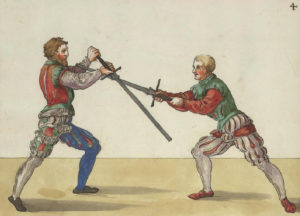 works, or at least has the possibility of working. When a person is learning a martial art, it requires a lot of conjecture and guesswork as to what it will be like to actually use these techniques in an adversarial situation. This can, and does, lead to self-delusion – thinking that you are better than you actually are.
works, or at least has the possibility of working. When a person is learning a martial art, it requires a lot of conjecture and guesswork as to what it will be like to actually use these techniques in an adversarial situation. This can, and does, lead to self-delusion – thinking that you are better than you actually are.
Usually at this point the budding martial artist enters what I like to call the “crucible of combat” which is typically a friendly sparring match (though the term can refer to actual self-defense engagements). In this place, our hypothetical student gets to try and use the techniques he’s been taught and he usually discovers one (or two) of several things:
(1) The technique is mostly useful
(2) The technique is sometimes useful
(3) The technique does not work.
(4) He cannot use the technique because of
(a) lack of skill
(b) lack of practice
(c) misreading his opponent
(d) lack of strength or flexibility.
When the match is over, the students get a chance to reflect and discuss what they learned and how to grow their skills and improve.
So, what does this have to do with Humanae Vitae you ask?
Throughout the 1960’s, the movement towards recognizing contraception both inside and outside of marriage as morally licit was growing and gaining strength. Even the advisors to the Pope chose to recommend going along with the rest of world instead of maintaining traditional Catholic moral teachings. Then this seemingly unstoppable train hit something. That something was Pope Paul VI under the inspiration of the Holy Spirit. In July of 1968, Paul VI promulgated the encyclical that he titled Humanae Vitae (Of Human Life) to speak to the faithful and the world about the dangers of contraception.
At the time, many chose to ignore this teaching, causing great scandal in the Catholic Church. The fallout from these events from 50 years ago are still with us today and continue to morph into new moral problems.
The mark of a strong, viable martial art lies in its ability to actually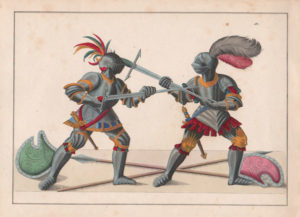 be used in real life situations with a reasonable rate of success. This obviously makes sense. If someone were to approach you as a master of some new self-defense system, but every time he (or she) got into a sparring match with someone else they lost, it would not inspire confidence in their system. As a matter of fact, there are plenty of people who do this every year, pretending to have created some system of martial arts. When these “systems” are put to the test, they fail, usually rather dramatically (https://www.youtube.com/watch?v=dOOh2J1b3lQ).
be used in real life situations with a reasonable rate of success. This obviously makes sense. If someone were to approach you as a master of some new self-defense system, but every time he (or she) got into a sparring match with someone else they lost, it would not inspire confidence in their system. As a matter of fact, there are plenty of people who do this every year, pretending to have created some system of martial arts. When these “systems” are put to the test, they fail, usually rather dramatically (https://www.youtube.com/watch?v=dOOh2J1b3lQ).
In a similar way, we can look at the moral and societal predictions that were given by Pope Paul VI. When Humanae Vitae was published the Church entered into the “crucible of combat” in regards to the culture and morality. Unfortunately, since the warnings of this encyclical went largely unheeded, we should be able to see the results of this moral crucible: Either the encyclical was totally wrong, or it was a brilliant and prescient success at determining what happened to our culture.
Pope Paul VI made four general “prophecies” about what would happen if the Church’s teaching on contraception were ignored. Let’s look at these predictions in comparison to our current societal situation:
Prediction 1 – Infidelity and Moral Decline
Pope Paul VI first noted that the pervasive use of contraception would “lead to conjugal infidelity and the general lowering of morality.”
Current Situation for Prediction 1
I do not think it can be argued that there has not been a widespread decline in morality, especially sexual morality, in the last 25 years. The dramatic increase in the number of divorces, abortions, out-of-wedlock pregnancies, and venereal diseases should persuade any doubter that sexual morality is not the forte of our modern age.
Upon further examination, it seems easy enough to point to contraception as being behind much of this trouble. The widespread acceptance and use of contraception has made sexual activity a much more popular option that it was when the fear of pregnancy gave a great number of young men and women pause, reducing the number who engaged in premarital sexual activity. The availability of contraception has introduced the concept of “responsible premarital sexual activity” as a viable choice. But adolescents are about as responsible in their use of contraception as they are in all other phases of their lives–such as making their beds, cleaning their rooms, and getting their homework done on time.
Prediction 2 – Loss of Respect for Women
Paul VI also argued that “the man” will lose respect for “the woman” and “no longer (care) for her physical and psychological equilibrium” and will come to “the point of considering her as a mere instrument of selfish enjoyment and no longer as his respected and beloved companion.” We call this a personalist approach to morality, where wrongdoing is based upon respect for the dignity of the human person. The Pope realized that the Church’s teaching on contraception is designed to protect the good of conjugal love. When spouses violate this good, they do not act in accord with their innate dignity, and thus they endanger their own happiness. Treating their bodies as mechanical instruments to be manipulated for their own purposes, they risk treating each other as objects of pleasure.
Current Situation for Prediction 2
The mutual loss of respect and caring has negatively impacted marriages and relationships throughout the culture. When someone no longer makes us happy or fulfills some need in the moment, we are immediately looking elsewhere to satisfy our selfish need. Also in this quest for pleasure without consequences, babies are no longer considered to be connected with the sexual act. So when they come along, it becomes a “problem” that needs a “solution,” which in many cases results in an abortion.
Prediction 3 – Abuse of Power
Paul VI observed that the widespread approval of contraception would place a “dangerous weapon…in the hands of those public authorities who take no heed of moral exigencies.”
Current Situation for Prediction 3
Studying the history of the “family-planning” programs instituted in the Third World is a testimony to this reality, where many people undergo sterilization unaware of what they are doing. China’s once child policy created a forced abortion program which shows the extremes that governments will go to in regards to population control programs. Not to mention that few people are willing to recognize the growing body of evidence that many parts of the world are not facing problems from overpopulation, but rather from underpopulation. The truth is that it will take many years to reverse the “anti-child” mentality now entrenched in many societies and then to have enough population growth to fully combat underpopulation.
Prediction 4 – Unlimited Dominion
The final warning given in Humanae Vitae was that contraception would lead people to think that they had unlimited dominion over their own bodies.
Current Situation for Prediction 4
Sterilization is now the most widely used form of contraception in the United States. Individuals are so convinced of their rights to control their own bodies that they do not hesitate to alter even their own physical makeup.
But unlimited dominion does not simply stop with contraception. Once this attitude is entrenched in one part of a person’s life, it cannot help but to be extended into other areas. We produce “test-tube babies” in a refusal to accept the body’s limitations. We no longer wait for a person to be dead before performing an organ transplant, just “nearly dead.” We now try to change our external sexual organs to match how we feel. People are exercising unlimited dominion over their bodies by trying to change the physical body to accommodate personal desires and timetables rather than limiting, adjusting, or controlling their desires for their own personal good. Because, in the end, we do not merely “own” our bodies: We are both body and soul. We must think of the relationship between body, soul, and intellect more as stewardship of the gifts given by God.
Wrapping it up
 Based on what we’ve seen in society over the past 50 years, it is clear that the predictions of Pope Paul VI were eerily, and completely, accurate. Very few understood (and most still do not understand) how the “simple” act of contraception would lead to a general unraveling of morality in regards to sexuality and how we view our own bodies.
Based on what we’ve seen in society over the past 50 years, it is clear that the predictions of Pope Paul VI were eerily, and completely, accurate. Very few understood (and most still do not understand) how the “simple” act of contraception would lead to a general unraveling of morality in regards to sexuality and how we view our own bodies.
In the crucible of combat, the sword fighting techniques of Europe in the Medieval and Renaissance periods were proven to be excellent forms of armed self-defense. Similarly, in other parts of the world, local crucibles proved the worthiness of unarmed forms such as Karate, Judo, and Tae-kwon do. In the crucible of combat that has been the culture wars over the past 50 years, it can be said that the teachings of Pope Paul VI as contained in Humanae Vitae have been proven to be true. Where we go from here as a society depends on whether we choose to blindly follow a system that has proven a disaster, or whether we change our system to match God’s plan for humanity.
 am naturally more receptive to than others. I have, and suspect many of us do, a mixture of good soil, shallow soil, and rocky ground. It occurs to me that I need to discern how I can turn those areas that are barren in my life into more fertile ground for God’s word.
am naturally more receptive to than others. I have, and suspect many of us do, a mixture of good soil, shallow soil, and rocky ground. It occurs to me that I need to discern how I can turn those areas that are barren in my life into more fertile ground for God’s word. “Then he made the disciples get into the boat and precede him to the other side, while he dismissed the crowds. After doing so, he went up on the mountain by himself to pray. When it was evening he was there alone. Meanwhile the boat, already a few miles offshore, was being tossed about by the waves, for the wind was against it. During the fourth watch of the night, he came toward them, walking on the sea. When the disciples saw him walking on the sea they were terrified. “It is a ghost,” they said, and they cried out in fear. At once [Jesus] spoke to them, “Take courage, it is I; do not be afraid.” Peter said to him in reply, “Lord, if it is you, command me to come to you on the water.” He said, “Come.” Peter got out of the boat and began to walk on the water toward Jesus. But when he saw how [strong] the wind was he became frightened; and, beginning to sink, he cried out, “Lord, save me!” Immediately Jesus stretched out his hand and caught him, and said to him, “O you of little faith, why did you doubt?” After they got into the boat, the wind died down. Those who were in the boat did him homage, saying, “Truly, you are the Son of God.” – Matthew 14:22-32
“Then he made the disciples get into the boat and precede him to the other side, while he dismissed the crowds. After doing so, he went up on the mountain by himself to pray. When it was evening he was there alone. Meanwhile the boat, already a few miles offshore, was being tossed about by the waves, for the wind was against it. During the fourth watch of the night, he came toward them, walking on the sea. When the disciples saw him walking on the sea they were terrified. “It is a ghost,” they said, and they cried out in fear. At once [Jesus] spoke to them, “Take courage, it is I; do not be afraid.” Peter said to him in reply, “Lord, if it is you, command me to come to you on the water.” He said, “Come.” Peter got out of the boat and began to walk on the water toward Jesus. But when he saw how [strong] the wind was he became frightened; and, beginning to sink, he cried out, “Lord, save me!” Immediately Jesus stretched out his hand and caught him, and said to him, “O you of little faith, why did you doubt?” After they got into the boat, the wind died down. Those who were in the boat did him homage, saying, “Truly, you are the Son of God.” – Matthew 14:22-32 unheeded. Why? Again, I think it is due to FEAR. They are afraid that it will make them look bad (or in some instances, that they will be caught in their own issues). Perhaps they were afraid that if these things came to light it would undermine the good that came out of the Dallas Charter and the good things that the Catholic Church does in the world. I think some were afraid that the laity would not have their backs, so to speak, if improprieties were known. So some chose to ignore the warnings and now we must suffer a greater loss. Perhaps there was also a fear of being pushed outside of the sphere of academic and political insiders if they stood up for the moral teachings of the Church. I would remind our leaders that the faith is at home with neither political party and being true to the teachings of Jesus can be uncomfortable to talk about. Please resist the temptation to ignore certain principles in order to “get along” with either side of the political spectrum.
unheeded. Why? Again, I think it is due to FEAR. They are afraid that it will make them look bad (or in some instances, that they will be caught in their own issues). Perhaps they were afraid that if these things came to light it would undermine the good that came out of the Dallas Charter and the good things that the Catholic Church does in the world. I think some were afraid that the laity would not have their backs, so to speak, if improprieties were known. So some chose to ignore the warnings and now we must suffer a greater loss. Perhaps there was also a fear of being pushed outside of the sphere of academic and political insiders if they stood up for the moral teachings of the Church. I would remind our leaders that the faith is at home with neither political party and being true to the teachings of Jesus can be uncomfortable to talk about. Please resist the temptation to ignore certain principles in order to “get along” with either side of the political spectrum.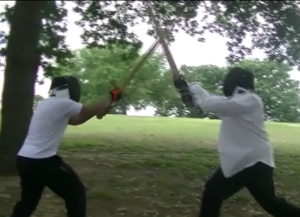 traditions of the historic Knightly Orders through the study and practice of swordsmanship while building character, learning more about our faith, and strengthening our values and bodies. Learning and practicing these self-defense martial arts appeals to a man’s natural desire to protect while also engaging many of the seven heavenly virtues: prudence, justice, temperance, fortitude (courage), faith, hope, and charity (for more on this see our article:
traditions of the historic Knightly Orders through the study and practice of swordsmanship while building character, learning more about our faith, and strengthening our values and bodies. Learning and practicing these self-defense martial arts appeals to a man’s natural desire to protect while also engaging many of the seven heavenly virtues: prudence, justice, temperance, fortitude (courage), faith, hope, and charity (for more on this see our article:  sins, the virtues, and how the virtues counteracted the deadly sins. In recent decades this necessary education seems to have fallen by the wayside. This is an unfortunate development because it is truly important to know. Why? In studying martial arts (or military strategy) we learn that we must be able to both identify the tactics our opponent and our own counters to those actions.
sins, the virtues, and how the virtues counteracted the deadly sins. In recent decades this necessary education seems to have fallen by the wayside. This is an unfortunate development because it is truly important to know. Why? In studying martial arts (or military strategy) we learn that we must be able to both identify the tactics our opponent and our own counters to those actions.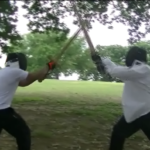 connecting them with the martial tradition of the historic Knightly Orders of the Catholic Church through the study and practice of swordsmanship. We use many medieval and renaissance texts to reconstruct how swords were really used. Through this we connect with our religious heritage while building character, learning more about our faith, and strengthening our values and bodies. A large part of what we do is to teach tactics for physical and spiritual defense. One component of those spiritual tactics are the virtues, both cardinal and theological, which are sometimes referred to as the heavenly or Christian virtues: prudence, justice, temperance, fortitude (courage), faith, hope, and charity.
connecting them with the martial tradition of the historic Knightly Orders of the Catholic Church through the study and practice of swordsmanship. We use many medieval and renaissance texts to reconstruct how swords were really used. Through this we connect with our religious heritage while building character, learning more about our faith, and strengthening our values and bodies. A large part of what we do is to teach tactics for physical and spiritual defense. One component of those spiritual tactics are the virtues, both cardinal and theological, which are sometimes referred to as the heavenly or Christian virtues: prudence, justice, temperance, fortitude (courage), faith, hope, and charity. works, or at least has the possibility of working. When a person is learning a martial art, it requires a lot of conjecture and guesswork as to what it will be like to actually use these techniques in an adversarial situation. This can, and does, lead to self-delusion – thinking that you are better than you actually are.
works, or at least has the possibility of working. When a person is learning a martial art, it requires a lot of conjecture and guesswork as to what it will be like to actually use these techniques in an adversarial situation. This can, and does, lead to self-delusion – thinking that you are better than you actually are. be used in real life situations with a reasonable rate of success. This obviously makes sense. If someone were to approach you as a master of some new self-defense system, but every time he (or she) got into a sparring match with someone else they lost, it would not inspire confidence in their system. As a matter of fact, there are plenty of people who do this every year, pretending to have created some system of martial arts. When these “systems” are put to the test, they fail, usually rather dramatically (https://www.youtube.com/watch?v=dOOh2J1b3lQ).
be used in real life situations with a reasonable rate of success. This obviously makes sense. If someone were to approach you as a master of some new self-defense system, but every time he (or she) got into a sparring match with someone else they lost, it would not inspire confidence in their system. As a matter of fact, there are plenty of people who do this every year, pretending to have created some system of martial arts. When these “systems” are put to the test, they fail, usually rather dramatically (https://www.youtube.com/watch?v=dOOh2J1b3lQ).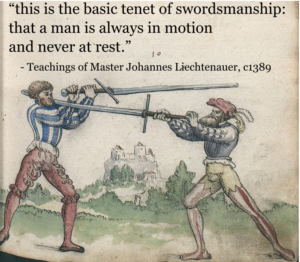 gels. The heart of spiritual combat is to overcome these temptations to sin because giving up on trying to grow your relationship with the Lord is not a viable option if heaven is your goal.
gels. The heart of spiritual combat is to overcome these temptations to sin because giving up on trying to grow your relationship with the Lord is not a viable option if heaven is your goal. A person who has a wooden sword will need to have boiled linseed oil to regularly treat the sword.
A person who has a wooden sword will need to have boiled linseed oil to regularly treat the sword. Oil to prevent rust – you can use a gun oil or a sword oil for this
Oil to prevent rust – you can use a gun oil or a sword oil for this A flat metal file with a medium grit to dress nicks in the edge
A flat metal file with a medium grit to dress nicks in the edge And a way to store the sword when not in use that will protect it from rust. I recommend using a gun sock made for rifles, they are inexpensive and the length is just right.
And a way to store the sword when not in use that will protect it from rust. I recommend using a gun sock made for rifles, they are inexpensive and the length is just right. x gloves by Magid. These gloves offer good protection to all 5 fingers, knuckles, and the back of the hand.
x gloves by Magid. These gloves offer good protection to all 5 fingers, knuckles, and the back of the hand. A set of Original M-Pact gloves from Mechanix. Good protection for 4 fingers and knuckles, okay protection on the thumb and back of hand.
A set of Original M-Pact gloves from Mechanix. Good protection for 4 fingers and knuckles, okay protection on the thumb and back of hand. or basic leather one’s will do nicely.
or basic leather one’s will do nicely.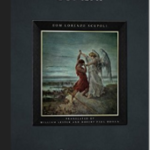 The Spiritual Combat by Dom Lorenzo Scupoli is the book that Saint Ignatius carried with him and that he read every day.
The Spiritual Combat by Dom Lorenzo Scupoli is the book that Saint Ignatius carried with him and that he read every day. A more modern book, the Manual for Spiritual Warfare by Paul Thigpen is a wonderful companion too.
A more modern book, the Manual for Spiritual Warfare by Paul Thigpen is a wonderful companion too.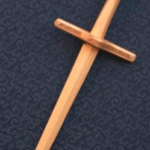 but a bladed Gauche would also have been seen.
but a bladed Gauche would also have been seen. Sigmund Ringneck’s translation is a little dated, but the manual is easy to understand and gives an excellent foundational understanding of the longsword, which is the basis of all western martial arts.
Sigmund Ringneck’s translation is a little dated, but the manual is easy to understand and gives an excellent foundational understanding of the longsword, which is the basis of all western martial arts.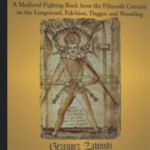 Codex Wallerstein gives another perspective on the longsword as well as adding in wrestling, dagger, and other weapons.
Codex Wallerstein gives another perspective on the longsword as well as adding in wrestling, dagger, and other weapons. Luckily there are a couple of affordable options from Absolute Fencing and Blue Gauntlet Fencing.
Luckily there are a couple of affordable options from Absolute Fencing and Blue Gauntlet Fencing.
 orso Training Bag. This training tool was developed for unarmed martial arts, but it works quite nicely with a waster or a blunt steel sword.
orso Training Bag. This training tool was developed for unarmed martial arts, but it works quite nicely with a waster or a blunt steel sword. Another good choice is a Feder from Regenyei Armoury. These are good mid-tier swords.
Another good choice is a Feder from Regenyei Armoury. These are good mid-tier swords.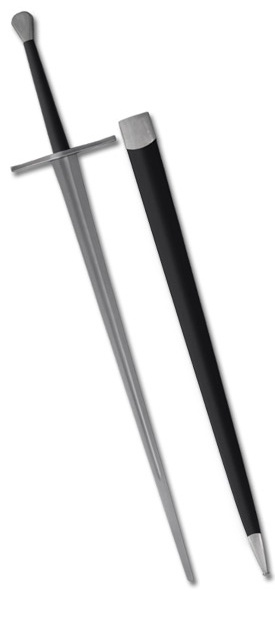 Finally, there is the Tinker-Pearce Longsword from Hanwei. It is a beginners sword with a price to match. This one won’t last as long, but it is a way to spar with a real steel sword.
Finally, there is the Tinker-Pearce Longsword from Hanwei. It is a beginners sword with a price to match. This one won’t last as long, but it is a way to spar with a real steel sword. efore take unto you the armour of God, that you may be able to resist in the evil day, and to stand in all things perfect.
efore take unto you the armour of God, that you may be able to resist in the evil day, and to stand in all things perfect.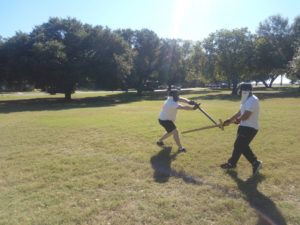 Martial Arts of Renaissance Europe (MARE), which is our group’s specific martial art, you see a similar understanding in other disciplines as well. Sifu Ted Wong from the New York Martial Arts Academy writes, “Footwork allows us to do 3 things: makes us hit harder, puts us in a position to hit, and gets us out of danger.” Even Bruce Lee spoke about the importance of your feet in combat: “The essence of fighting is the art of moving.”
Martial Arts of Renaissance Europe (MARE), which is our group’s specific martial art, you see a similar understanding in other disciplines as well. Sifu Ted Wong from the New York Martial Arts Academy writes, “Footwork allows us to do 3 things: makes us hit harder, puts us in a position to hit, and gets us out of danger.” Even Bruce Lee spoke about the importance of your feet in combat: “The essence of fighting is the art of moving.” As you are most likely aware, Lent is a liturgical season in the Catholic Church that comes before Easter. Officially, it begins on Ash Wednesday (which is March 1st this year) and ends on Holy Thursday (April 13th), lasting slightly longer than 40 days. Since the date of Easter moves based on the cycles of the moon, the dates of Lent will be different every year. The meaning of the word “Lent” is from the old English meaning length and this is, of course, an allusion to the lengthening of days during this period. As the days get longer, there is more light and less dark. Similarly we are called to grow in faith and grow the light of Christ in our lives, while reducing the darkness of sin.
As you are most likely aware, Lent is a liturgical season in the Catholic Church that comes before Easter. Officially, it begins on Ash Wednesday (which is March 1st this year) and ends on Holy Thursday (April 13th), lasting slightly longer than 40 days. Since the date of Easter moves based on the cycles of the moon, the dates of Lent will be different every year. The meaning of the word “Lent” is from the old English meaning length and this is, of course, an allusion to the lengthening of days during this period. As the days get longer, there is more light and less dark. Similarly we are called to grow in faith and grow the light of Christ in our lives, while reducing the darkness of sin. habits of eating and exercise are quite popular. However, if a person were to go to gym on try to do 90 minutes of intense exercise as a beginner, they would either injure themselves or become so sore and exhausted as to be unable (or unwilling) to come back. Think of Lenten practices as spiritual exercise. You are trying to get your mind and soul in shape. Therefore, a similar set of rules should guide you –
habits of eating and exercise are quite popular. However, if a person were to go to gym on try to do 90 minutes of intense exercise as a beginner, they would either injure themselves or become so sore and exhausted as to be unable (or unwilling) to come back. Think of Lenten practices as spiritual exercise. You are trying to get your mind and soul in shape. Therefore, a similar set of rules should guide you –